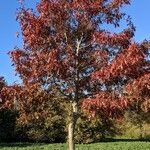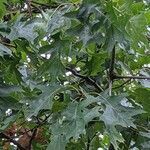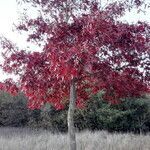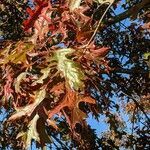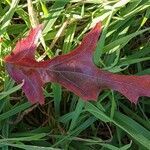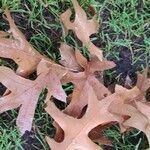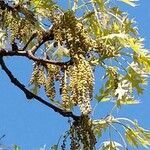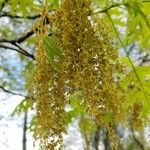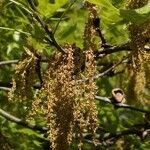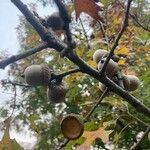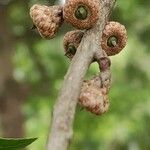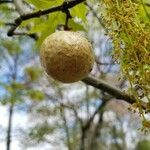A small tree. It grows 18-25 m tall and spreads 12-15 m wide. It loses its leaves during the year. The lower branches droop downwards. The leaf stalk is 2.5-5 cm long. The leaves are oval and 10-20 cm long by 7-10 cm wide. The leaves are glossy and deeply divided. There are 5-7 lobes. The leaves are mid-green and turn red-brown in autumn. The female flowering stalks are about 1 cm long. There can be 1, 2 or 3 cups. They enclose about 1/3 of the nut. The nut is brownish and narrow and oval. It is 2-2.5 cm long by 1.5 cm wide. The cup is saucer like.
Perennial tree, up to 25 m high. Leaves deciduous, elliptic, very deeply lobed, the lobes bristle-tipped, base broadly tapered, apex acute; green and shining above, paler below. Acorns almost hemispherical, 12-17 mm in diam., base enclosed in a thin saucer-like cup.
